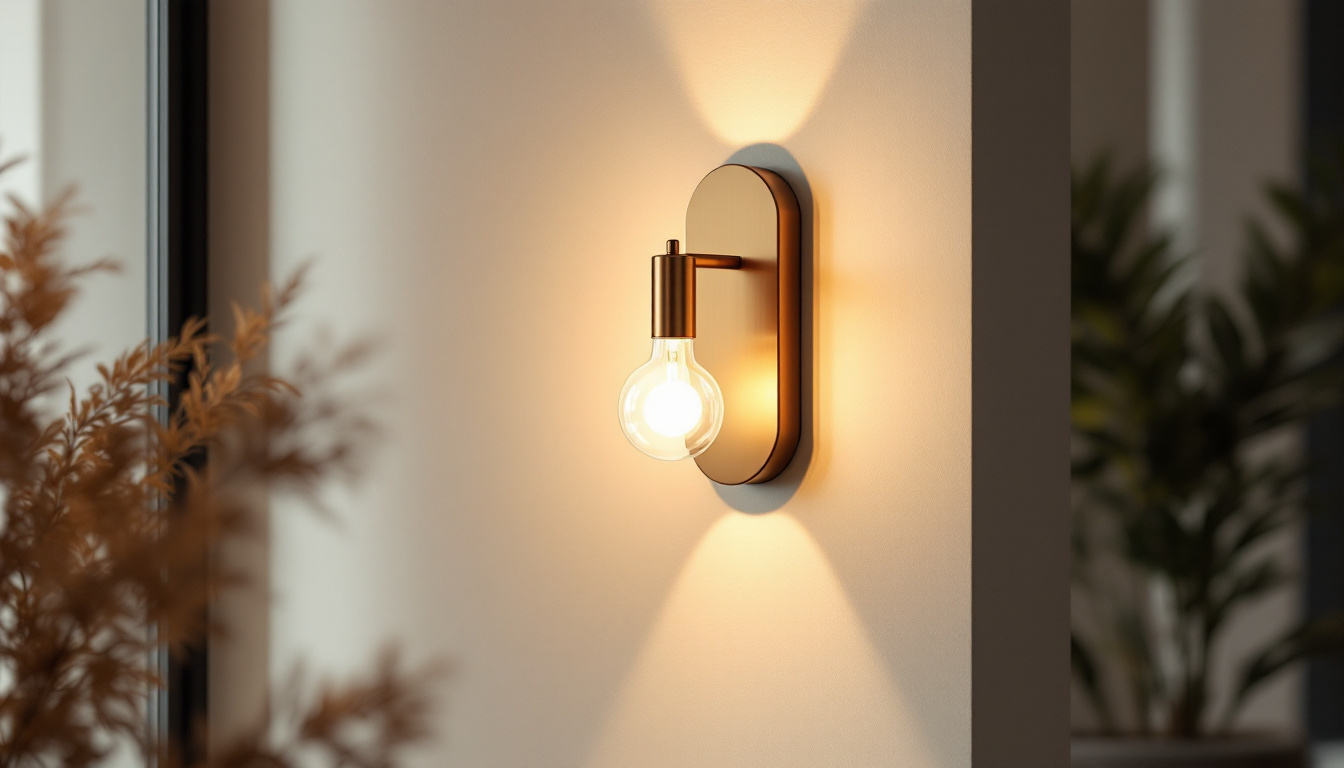
Lighting technology has evolved significantly over the years, with various innovations making their way into the market. Among these advancements, circle lights have emerged as a popular choice for both residential and commercial applications. Understanding the history of circle lights and their benefits can help lighting contractors make informed decisions that ultimately reduce costs and improve efficiency.
Circle lights, often referred to as circular or round LED lights, have transformed the way spaces are illuminated. Their design not only provides aesthetic appeal but also enhances functionality. The journey of circle lights began with the fundamental principles of lighting design, which have been refined over time.
The concept of circular lighting can be traced back to the early days of incandescent bulbs, where the focus was primarily on providing adequate illumination. As technology progressed, the introduction of fluorescent and halogen lights brought about new possibilities in design and efficiency. However, it wasn’t until the advent of LED technology that the true potential of circle lights began to be realized.
LEDs revolutionized the lighting industry by offering longer lifespans, lower energy consumption, and reduced heat output. This shift allowed for the creation of more versatile lighting fixtures, including circle lights. Their unique design allows for even light distribution, making them an ideal choice for a variety of applications, from residential settings to commercial spaces.
As designers and architects began to explore the potential of circle lights, they found that these fixtures could be seamlessly integrated into various styles and themes. Whether it’s a minimalist modern home or a cozy rustic café, circle lights can enhance the atmosphere while providing functional lighting. Moreover, the ability to customize the color temperature and brightness of LED circle lights means that they can be tailored to suit specific moods or activities, from bright task lighting in a kitchen to soft ambient lighting in a living room.
In recent years, the innovation surrounding circle lights has expanded beyond mere functionality. Designers are now experimenting with different materials, finishes, and sizes, resulting in stunning statement pieces that can serve as focal points in any room. From sleek metal frames to colorful acrylic designs, the variety available allows consumers to express their personal style while enjoying the practical benefits of these lights. Additionally, the rise of smart lighting technology has further enhanced the appeal of circle lights, enabling users to control their lighting through apps or voice commands, thus adding a layer of convenience and modernity to everyday life.
For lighting contractors, circle lights present numerous advantages that can lead to cost savings and improved project outcomes. Understanding these benefits can help contractors make strategic decisions when selecting lighting solutions for their clients.
One of the most significant benefits of circle lights is their energy efficiency. Compared to traditional lighting options, LED circle lights consume considerably less power while providing the same level of brightness. This reduction in energy consumption not only lowers utility bills for clients but also allows contractors to offer more sustainable solutions. Additionally, the use of energy-efficient lighting can contribute to LEED certification for green building projects, making it an attractive option for environmentally conscious clients.
Circle lights typically have a much longer lifespan than conventional lighting options. With an operational life that can extend for years, these fixtures reduce the frequency of replacements and maintenance. For contractors, this means fewer trips for replacements and repairs, ultimately saving time and labor costs. Moreover, the durability of circle lights often translates to fewer complaints from clients regarding flickering or dimming, leading to higher customer satisfaction and potential referrals for future projects.
The versatility of circle lights makes them suitable for a wide range of applications. Whether used in residential homes, offices, retail spaces, or outdoor environments, circle lights can be adapted to fit various design aesthetics and functional requirements. This flexibility allows contractors to cater to diverse client needs, enhancing their service offerings. Furthermore, the sleek design of circle lights can complement modern architectural styles, making them a popular choice for contemporary spaces. They can also be integrated into smart lighting systems, allowing for remote control and automation, which adds an extra layer of convenience for tech-savvy clients.
In addition to their functional benefits, circle lights also enhance the aesthetic appeal of any space. Their clean lines and minimalist design can create a modern and sophisticated atmosphere, making them an ideal choice for both residential and commercial projects. Lighting contractors can leverage this visual appeal by showcasing circle lights in their portfolios, demonstrating how these fixtures can transform ordinary spaces into extraordinary ones. Additionally, the ability to customize the color temperature and brightness of circle lights allows contractors to create the perfect ambiance for various settings, whether it be a warm, inviting glow for a home or a bright, energizing light for a workspace.
Another important advantage of circle lights is their cost-effectiveness over time. Although the initial investment may be higher than traditional lighting options, the long-term savings on energy bills and maintenance costs can significantly offset this expense. For contractors, this means they can offer clients a more economical solution in the long run, which can be a strong selling point. Additionally, many manufacturers provide warranties for circle lights, further assuring clients of their durability and reliability, thus enhancing the contractor’s reputation for quality service.
Implementing circle lights into projects can lead to significant cost reductions. However, contractors must also consider strategies that maximize these benefits while ensuring client satisfaction.
Establishing strong relationships with suppliers can lead to better pricing on bulk purchases of circle lights. By negotiating favorable terms and leveraging volume discounts, contractors can reduce upfront costs. This approach not only benefits the contractor but also allows for competitive pricing when presenting quotes to clients. Additionally, maintaining a good rapport with suppliers can lead to priority access to new products and innovations, which can enhance the contractor’s offerings and keep them ahead of competitors. Regular communication and collaboration with suppliers can also result in tailored solutions that meet specific project needs, further optimizing both cost and performance.
Conducting energy audits for clients can help identify areas where circle lights can be implemented for maximum efficiency. Many utility companies offer incentives for upgrading to energy-efficient lighting, which can further reduce project costs. By staying informed about available rebates and incentives, contractors can provide added value to their clients while minimizing expenses. Furthermore, presenting clients with detailed reports from these audits can help them understand their energy consumption patterns and the long-term savings associated with switching to circle lights. This not only fosters trust but also positions the contractor as a knowledgeable partner in energy management, potentially leading to more referrals and repeat business. Engaging clients in discussions about sustainability and energy efficiency can also enhance their overall satisfaction and loyalty, making them more likely to recommend the contractor to others in their network.
While circle lights offer numerous advantages, proper installation is crucial to maximizing their benefits. Understanding the best practices for installation can help contractors avoid common pitfalls and ensure client satisfaction.
The effectiveness of circle lights largely depends on their placement. Properly assessing the space and determining the optimal locations for installation is essential. Factors such as ceiling height, existing lighting conditions, and the intended use of the space should all be considered when deciding where to install circle lights.
Circle lights may require specific wiring configurations or compatibility with existing systems. Contractors must ensure that they are familiar with the electrical requirements of the lights they choose to install. This knowledge can prevent costly mistakes and ensure a smooth installation process.
The lighting industry continues to evolve, with new trends emerging that can impact the use of circle lights. Staying informed about these trends can help contractors remain competitive and offer cutting-edge solutions to their clients.
As smart home technology becomes increasingly popular, the integration of smart features into circle lights is on the rise. This includes the ability to control lighting remotely, adjust brightness levels, and even change colors. By offering smart lighting solutions, contractors can appeal to tech-savvy clients looking for modern, efficient lighting options.
With growing awareness of environmental issues, there is a significant push towards sustainability in the lighting industry. Circle lights made from eco-friendly materials or those that utilize renewable energy sources are becoming more prevalent. Contractors who prioritize sustainability can attract clients who value environmentally responsible solutions.
Circle lights represent a significant advancement in lighting technology, offering numerous benefits that can lead to cost reductions for lighting contractors. By understanding the history, advantages, and installation considerations of circle lights, contractors can make informed decisions that enhance their service offerings and improve client satisfaction.
As the industry continues to evolve, staying abreast of emerging trends and technologies will be essential for contractors looking to maintain a competitive edge. Embracing circle lights not only provides an opportunity for cost savings but also positions contractors as leaders in the ever-changing landscape of the lighting industry.
Ready to take advantage of the cost efficiency and advanced technology of circle lights? Look no further than LumenWholesale for all your lighting needs. We provide contractors with high-quality, specification-grade lighting products at unbeatable wholesale prices. Our extensive selection not only meets but exceeds industry standards, ensuring you have access to reliable and high-performance lighting for every project. Plus, with free shipping on bulk orders, you can stock up on premium lighting without worrying about hidden fees or compromises. Don’t miss out on the perfect combination of quality, affordability, and convenience. Visit LumenWholesale today for Wholesale Lighting at the Best Value and elevate your lighting game.

Discover how the United States electrical outlet is revolutionizing the workflow of lighting contractors.

Discover the latest trends in sconce light fixtures that every lighting contractor needs to know.

Unlock the secrets of discount grow lights with our comprehensive guide tailored for lighting contractors.

Discover how post solar lanterns are revolutionizing the lighting industry for contractors.